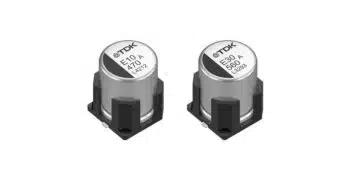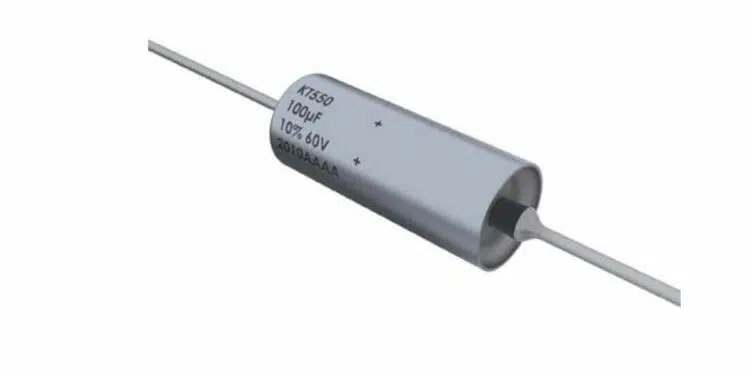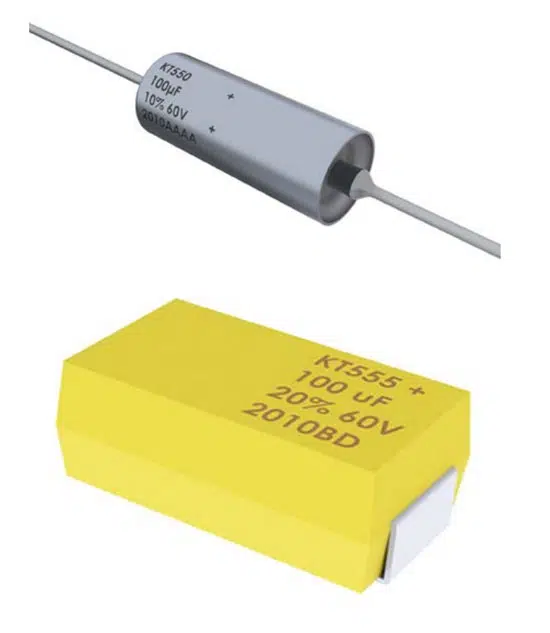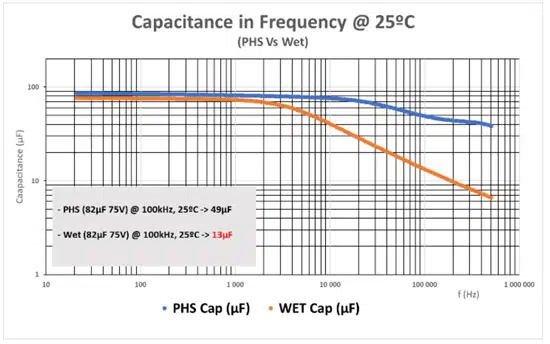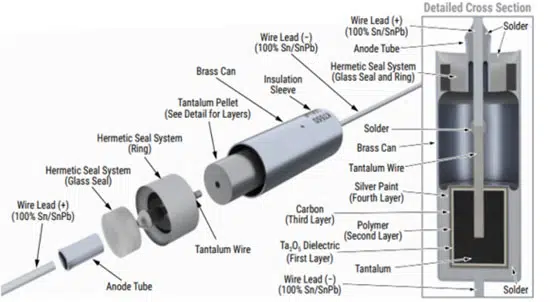KEMET is now introducing a new case size (C case) inside the T550 Series, axial leaded polymer hermetically sealed (PHS) tantalum capacitors, offering higher capacitance availability for different voltages rails.
In a continuous effort to extend the technology offering to the defense and aerospace community, the new C case size offer a new capacitance of 300µF rated at 50V as an exciting solution for power rails up to 40V in an operating temperature below 85°C.
The T550 (105°C) and T551 (125°C) axial leaded polymer hermetically sealed (PHS) devices are tantalum capacitors with a Ta anode and Ta2O5 dielectric. A conductive organic polymer replaces the traditionally used MnO2 or wet electrolyte as the cathode plate of the capacitor.
The conductive organic polymer has very low ESR and improved capacitance retention at high frequency and low temperature. The PHS device also exhibits a benign failure mode, which eliminates the catastrophic spill of the acidic electrolyte during a case breach in Wet Tantalum capacitors. Additionally, this part may be operated at voltages up to 80% of rated voltage, with equivalent or better reliability than traditional MnO2 or Wet Tantalum capacitors operated at 50% of rated voltage.
Polymer Hermetic Sealed Versus Wet Tantalum
Today, there is a clear trade-off when designers still consider the usage of Wet Tantalum capacitors that were so widely used in power supply lines. In the past, Wet technology could offer a considerable increase in the performance of the existing capacitance solutions (increased capacitance and lower ESR).
T550 PHS Benefits
- Includes F-Tech anode which eliminates hidden defects in the dielectric
- 100% simulated breakdown screening
- Maximum operating temperature of +105°C
- DLA drawing 13030 qualified parts available
- Polymer cathode technology
- Extremely low ESR
- High frequency and low temperature capacitance retention
- 100% constant voltage conditioning (240 hours)
- 100% surge current tested
- Volumetrically efficient
- Non-ignition failure mode
- Approximately 25% lighter than equivalent wet tantalum
- T555 surface mount design option (right image)
However, it is known that larger capacitance values typically have a greater risk of failure (a larger dielectric surface area is more likely to present structural defects). It is also often seen as increased sensitivity to mechanical stresses (shock and vibration) and reverse voltage conditions. Failures are often related to the internal gas pressure generated due to the electrolysis of the electrolyte caused by excessive DCL leakage currents in forward or reverse directions.
There are additional reasons why Wet technology is being replaced by tantalum capacitors based on solid cathode technology, particularly the tantalum polymer capacitors. One of the major impacts of a temperature increase in a tantalum capacitor is the increase of leakage current. Although this will not necessarily result in a capacitor failure, it can cause circuit failure if DCL moves outside the required tolerance. As leakage current increases, it can speed up runaway effects leading to a dielectric breakdown. At low temperatures, the electrolyte used in devices will start freezing. As a result of that change, the capacitance will drop and, in a limited situation, result in an open circuit.
It is also known that applications continuously increase the level of switching frequency (mostly DC/DC converters). Again, that fact significantly impacts the capacitance roll-off for Wet Tantalums. In the next plots, experimental measurements of capacitance over frequency of two capacitors (PHS and Wet Tantalum), both 82µF 75V, at two different temperatures make clear the significant impact of temperature and frequency in Wet Tantalums when compared with the new solid cathode technology used in KEMET PHS T550 and T551 series.
At 100kHz, the PHS T550 capacitor sees the capacitance dropping from 49µF at 25°C to 43.4µF when submitted to -55°C. The Wet Tantalum shows a drop to 2.2µF at 100kHz and -55°C.
New C Case Size Catalog Extension
KEMET extends the product offering with a new case size inside the T550 series. With different reliability levels (B and C) and surge current options available, it is now possible to order a more volumetric efficient case size, with a 300µF, 50V available in a C case.
KEMET Tantalum Polymer Capacitors Hermetically Sealed (T550 Series) offer a voltage derating recommendation of 80% for applications up to 85°C. The new C case recently added to the PHS portfolio will offer 300µF to be used in a 40V rail. Also, the application will benefit from the advantages of a solid cathode capacitor where the roll-off with frequency and capacitance variation with temperature will offer additional stability and higher levels of energy.
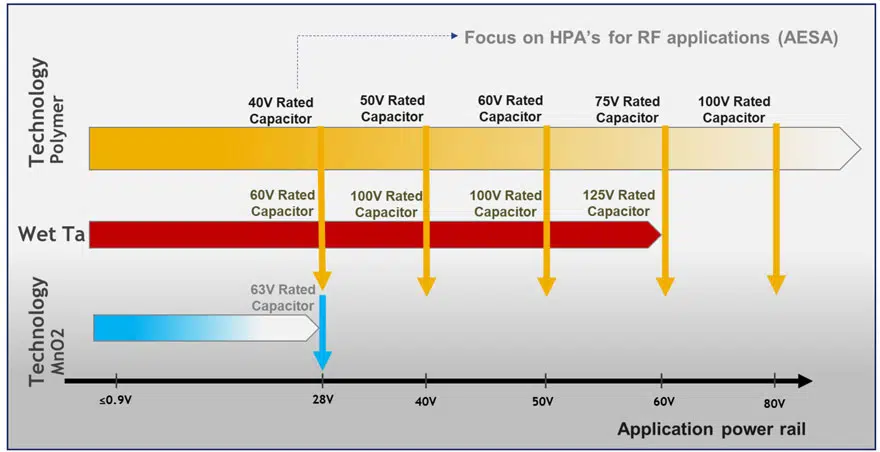
Construction
KEMET High-Reliability PHS series presents two different discrete configurations, through-hole, and SMD. Details of the mechanical construction are presented below:




